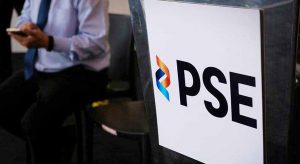Is your company ready? Understanding global investment opportunities and risks

The Financial Executives Institute of the Philippines (FINEX) held its FINEX annual conference called FINEX WEEK last Oct. 3 to 7, under a central theme, “Reshaping the Future with Transformational Change.” All the days of FINEX WEEK were highlighted by various conferences, including one topic of which is mentioned above, the theme of this article.
“Is your company ready? Understanding Global Investment Opportunities and Risks” as a topic covers a broad spectrum of issues, from many players, many viewpoints, and many angles, that it is quite difficult to keep the reader riveted on the theme. Outward investments? Inward investments? Inward=local risk, outward=foreign country risk, different regulatory regimes, local tax structures vs. foreign country tax structures, local corporate laws vs. foreign corporate laws, et al. There’s a plethora of permutations that can swiftly obscure the objective.
For the sake of pertinence, this article will only dwell on investments being brought into the country or being done intra-country, as these invariably improve the local economy more than an outward one. More companies have been and will continue to be involved and benefit from incoming investments than companies investing outside, typically the predominance of the ultra large companies.
Understanding the investment framework and dynamics: a singular focus on inward and local investments also presents a bit of a challenge in creating a draft which, if extensive, can fill many pages. This article then attempts to present a concise overview of the dynamics.
The players
Investors come in many shapes and forms, and at different stages of your company. Angel investors normally invest when the company needs “seed money” to get the business off the ground. This is typically equity investment which is made after a decision wherein the angel investor can take a risk, as the new company can be successful. Venture capital firms present a model where they invest at a later stage than what the angel investors take; when there is already proof of concept and there is visible positive market reaction to the product or service. Private equity firms (PE firms) come in at a much later stage, when there is a medium to long term history of revenue generating capacity and profit margin consistency. The third type of investor would be the foreign companies that go into the country and establish strong economic partnerships with local entities.
The process
Investors typically require two major documents that they need to study before making a decision to go to the negotiating table. The Information Memorandum, which must contain extensive information about the company; its operations in detail, its products, the markets it serves, its competitive advantage, the quality of its management, shareholder profiles, its historical financial performance with detailed explanations of the dips and rises in revenues and profits and debt levels among other issues, its business plans, and strategy for medium term growth. Next is the Financial Model, which must lay out the historical financial statements accompanied by medium term projections (5 to 7 years), which delineates the underlying assumptions to the model, serving as links to the numbers in the individual cells in Excel format.
Once submitted, the investor should be able to evaluate the company’s financial worth by doing a valuation. The next step is for the investor to present his valuation and the corollary terms which he will propose to accompany the financial investment. The investor will present his valuation amount and terms in a document called the Non-binding Term Sheet. This term sheet will have to go through the company’s approving authority: typically the board of directors of the company, and possibly the shareholders (should the by-laws of the company require the approval of the latter).
The ping pong, the tug of war, and gamesmanship
The road up to the presentation of the non-binding term sheet by the investor is quite straightforward. However, the road between the presentation of the non-binding term sheet until the acceptance of the terms is not so. The end game of an M and A deal (merger and acquisition) is to close the gap between the company’s expectations (the seller) and the investor’s initial offer. The aim is to close the deal, and not just to narrow it. And in all deals, this is typically the most difficult part. Experience shows that deals can be won or lost, or stalled depending on the skillful navigation of the issues that arise between the company and the investor.
This is the ping pong stage which may or may not lead to a tug-of-war between the two. The contentious issue could be in millions of pesos, or billions, or the price of the investment. It may be the number of seats in the board, it could be the dividend policy post investment, the power sharing agreement, or any major issue in the proposed shareholder agreement. Endless hours at the negotiating table, dozens or even hundreds of emails, countless phone calls, and SMS’s. Deals can be closed within a few months or could face delays for years. On and off, or worse, off and on communication, characterizes this phase. All commercial issues, and a few operational, management and shareholder issues, must be sorted out at this phase.
Finally, the handshake
But then again, it’s not over yet. Upon conclusion of the negotiations of the issues in the non-binding term sheet, the investor is required to present the Revised Term Sheet which must embody all the terms agreed upon at the negotiating table. If accepted by the company, the process moves into what is called the confirmatory Due Diligence phase, which entails making available all the books of the company: from financial, legal, tax and operations, which will be reviewed by the investor’s consultants. It’s akin to opening your company’s gut to a stranger you just met a few months ago, who now has an interest to live with you in your house, and you have to graciously accommodate.
This is another key phase of the deal: as depending on the findings of the investor’s due diligence, the Final Term Sheet could contain markedly different terms from the second or revised term sheet which was given previously. Items that could affect the tone of the final term sheet may be the need for higher provisions for the receivables, potential tax liabilities not seen during the initial evaluation, or contingent liabilities such as retirement liabilities. A few deals have been lost in this phase. There are solutions for these, though and it will take another round or two of negotiations to get a final agreement on the final term sheet. Once the final term sheet is accepted by the company, the process moves into formalization of the agreement, which will likely involve drafting of a Share Purchase Agreement (or an asset sale, depending on the final agreement, to document the investment), and a Shareholders’ Agreement, should the investment in the company be a partial stake and not full, and other relevant agreements.
The shadow called RISK
Risk is an issue that can impede, punctuate, illuminate, or enhance any initiative. Either of these at any point in the process, or all of these in certain stages of the process, can happen. Equity and debt instruments carry risks, obvious or hidden, large or small, present or contingent. It’s unavoidable; not the incurrence, but the recognition that it may happen. All investors and lenders acknowledge that it may happen, and it must be addressed, like it or not. Once evaluated, it is then priced. All risks can and must be priced (another topic altogether), for the deal to go through. There’s a technical method and there’s also the subjective way. And believe it or not, risk is the foundation of all investments and lending. Risk must first be analyzed, then understood, then accepted. Product risk, pricing risk, market risk, governance risk, government risk (emphasis supplied), supply risk, demand risk, and more. All these must be done without hesitation and without fail.
Given what has been discussed in this article, it will be meaningful to know: is your company ready for global opportunities and risks?




